Center for Sustainable Landscapes
Project Overview
The Center for Sustainable Landscapes (CSL) is a 24,350-square-foot education, research and administration facility at Phipps Conservatory and Botanical Gardens, a public garden attraction in Pittsburgh, Pennsylvania. Designed and built to generate all of its own energy while treating and reusing all water captured on-site — the result of an integrated design process guided by the principles of the International Living Future Institute — the facility is the first in the world to meet all four of the world’s highest green construction standards: The Living Building Challenge™, awarded in March 2015; WELL Building Platinum, awarded in October 2014; Four-Stars Sustainable Sites Initiative™ (SITES™) certification for landscapes, awarded in November 2013; and LEED® Platinum, awarded in August 2013. The core function of the CSL is to increase awareness of the interconnection between the natural and built environment, and the efficacy of sustainable systems. By employing a design that invites exploration while seamlessly integrating with the guest experience of Phipps — a 120-year-old institution which receives over 400,000 visitors annually — the CSL is uniquely positioned to showcase renewable energy technologies, conservation strategies, water treatment systems, and sustainable landscaping to a broad audience, including many engaging with these topics for the first time.
Design & Innovation
The intent of the CSL is to demonstrate the beauty of humanity living in harmony with nature. The design — shaped by systems thinking — reveals the interconnection between all natural and human-made systems so that visitors and society at large may better understand how each of our actions influence all others, ultimately inspiring all of us to live more sustainably. Designed to operate as efficiently and elegantly as a flower, the project challenges the perceived mutual exclusivity between built and natural environments, effectively blurring the line between the two. The sun, earth and wind are used to light, heat and cool the interior, plants clean wastewater for reuse and every occupied space affords views of nature. The stringent parameters required by the robust building certifications necessitated an integrative design process with well-defined goals shared by the entire design team and the owner. These “limits” actually served as catalysts for creative and innovative solutions that define the forefront of sustainable design. The holistic approach used to bring this project to life, and the exportable, behavior-changing education programs and original research being conducted within this space, can be applied universally, creating communities that are healthier and more supportive of all life.
Regional/Community Design
The intent for the design of the CSL was to celebrate place and local talent by including staff and students from neighboring universities and assembling the entire design team from Pittsburgh and Pennsylvania. The project is located within walking distance of the neighborhood of Oakland, connecting it to a network of major educational, medical and cultural institutions. A significant portion of the CSL is now part of the overall Phipps guest experience, accessible to 400,000-plus visitors per year. In the CSL’s early stages, Phipps held planning workshops with local organizations, community groups and institutions. One result of these discussions was a partnership with Carnegie Mellon University and the University of Pittsburgh, who participated in the design and are now conducting original research on building, site, and occupant performance and wellness. The CSL site affords exclusive parking spots for low emitting and fuel efficient vehicles, car pool vehicles, and electric vehicle parking and charging. The site is served by the city’s public transit system, and a University shuttle. Charter buses and school buses are accommodated by a pick-up/drop off stop and waiting-area parking. Phipps is presently exploring programming to incentivize occupants to increase their use of alternate modes of transportation.
Metrics
Land Use & Site Ecology
The CSL site is nothing short of an ecological rebirth. Previously, the 2.9-acre site was a City of Pittsburgh Public Works Yard, entirely paved over and portions classified as a brownfield due to leaking USTs. There were no existing natural land covers or ecosystems to preserve or protect. The site can now manage a 10-year storm event using soil and vegetation based systems, and features 1.5-acres of new green space with 100 native plant species. From open meadows to oak woodlands, to water’s edge and wetland plantings, a range of ecosystems are represented on-site that respond to the dramatic changes in topography. The biodiverse plantings provide food, shelter, and nesting opportunities to endemic wildlife and also help link the site’s landscape to neighboring 450-acre Schenley Park, Pittsburgh’s second-largest green space. Central to the CSL landscape is a 4,000 sf lagoon that is fed by conservatory roof runoff and populated with native fish and turtles. A visitor to the CSL can learn about the beauty and benefits of native plant communities, green infrastructure and its role in improving local water quality, and also see the wildlife, both terrestrial and aquatic, that the site’s regenerative landscape is designed to preserve and protect.
Bioclimatic Design
During integrated charrettes, the entire team worked to design a building that connects occupants to nature and maximizes efficiency. Pittsburgh’s humid continental climate required strategies that accommodate significant seasonal temperature and weather differences. Studies showed photovoltaics would be more effective than wind in generating energy and that geothermal energy could meet the building’s imperative to operate with less than 30% of the energy required for a typical office building. The CSL’s was designed with a long, narrow floor plan to provide maximum southern exposure for daylighting and solar gain. The orientation maximizes natural ventilation via southerly spring and summer winds while minimizing exposure to westerly winter winds. Sun-tracking studies informed the design and placement of solar shades, allowing full winter sun to penetrate the building while minimizing summer solar gain. Interior light shelves provide significant daylighting throughout the year, extending natural light into the 40-foot maximum-width office space. The atrium is unconditioned; extensive use of concrete and phase change material provides thermal mass that, when managed via automatic shade cloths, window walls and roof top vents, creates comfortable conditions. Deciduous trees and vines covering exterior concrete walls aesthetically integrate building and landscape while improving energy performance of the building envelope.
Light & Air
To reinforce connections to nature, the CSL design virtually guarantees anyone inside will be bathed in daylight, will breathe fresh, high-quality air, and will have views of nature. Occupants enjoy 80% daylight autonomy, with programmable dimmers adjusting overhead lighting. LED task lights provide additional light if necessary. All regularly occupied spaces are within 15 feet of operable windows that afford access and views of nature. An Aircuity system monitors temperature, humidity, CO2, TVOC, particulates and CO in occupied spaces, ensuring the highest quality air is delivered where and when it is appropriate. In conjunction with this system, a rooftop energy recovery unit modulates between 19.4% and 100% outside air based on need, which is delivered through underfloor and ceiling distribution systems. Breathing zone air ventilation rates are 55% above ASHRAE Standards 62.1-2004 requirements, and 100% of the total building area is adequately served by natural ventilation for part of the year. The atrium is not mechanically heated nor cooled. Instead, passive strategies like thermal massing, high-performance operable glazing, solar shading, and phase-change material maintain comfortable temperatures. In addition to traditional biophilic strategies, an extensive biophilic art program promotes an engaging, sensory connection to the site both indoors and out.
Metrics
Water Cycle
The 2.9-acre CSL site is net-zero water, managing all rainfall and treating all sanitary waste on site. The CSL can manage a 10-year storm event within the site boundaries (3.3” of rain in 24 hours) through soil- and vegetation-based systems like green roofs, rain gardens, bioswales, lagoon, pervious asphalt, and high performance native landscapes. No potable water was used for irrigation after the landscape’s establishment period. The CSL also harvests ½ acre of rooftop runoff from adjacent buildings outside the site boundary. Annually, approximately 500,000 gallons of rooftop runoff are harvested in an underground 60,000-gallon rain tank. The harvested water will be reused to offset daily irrigation demand in Phipps’ conservatory spaces, significantly reducing the campus’ need for municipal water supply and the energy required to treat and deliver it to Phipps. All of the building’s wastewater is treated on site using settling tanks, constructed wetlands, sand filters, and UV filters prior to reuse as flush water for all the building’s restrooms.
Metrics
Energy Flows & Energy Future
The CSL design utilizes passive-first strategies to connect occupants to the natural world – a strategy which has proven beneficial to occupant comfort and building performance. Efforts to maximize natural daylight, supplemented by occupancy sensors and daylight dimming controls, have resulted in a lighting power density of 0.57 W/sf without adjustment for controls. Daylight autonomy in most space is approximately 80%; total projected energy savings to 90.1-2004 baseline is 77%. These strategies couple with renewable energy generation and reuse of water to yield a total Energy Utilization Index (EUI) modeled at 19 kBTU/sf/yr post-occupancy. In its 2015 operational year, the CSL achieved an actual total EUI of 18 kBTU/sf/yr, with a net EUI of -3 kBTU/sf/yr, producing more electricity onsite through photovoltaic and wind generation than the building used. This represents a 73.8% reduction (68.7 kBtu/sf/yr median EUI per EPA’s Target Finder vs. 18 kBtu/sf/yr for CSL EUI), meeting the AIA’s 2030 commitment. Each year, the surplus from renewable energy resources has grown, from 5,082 kWh in 2013 to 11,185 kWh in 2014 to 18,724 in 2015. Having a net-zero building powered by onsite renewable energy eliminates fossil fuel use and the greenhouse gasses associated with carbon-intensive energy production.
Metrics
Materials & Construction
Throughout the design, construction and furnishing of the CSL, every effort was made to promote a transparent, socially equitable and low-toxicity materials economy. A rigorous vetting process guided sourcing materials compliant with the Living Building Challenge Red List, which identifies material components that negatively impact the environment and/or people exposed to them. The Athena Impact Estimator for Buildings life cycle assessment tool guided the design development, analyzing candidate materials for energy consumption, solid waste, air pollution index, GWP, and weighted resource use, thereby informing structural systems, exterior envelope and interior finish materials. To achieve net-zero energy, a robust, efficient building envelope was necessary. The CSL exterior wall assembly has an R-value of 12, the roof assembly has an R-value of 48 and slab-on-grade floors have an R-value of 8. The project accounted for its total carbon footprint by purchasing 2600mT of Green-e certified renewable carbon offsets. During construction, 96.74% of construction waste was diverted from disposal. Occupants are encouraged to use recycling and composting receptacles; each cubicle is provided with a 3G recycling bin and smaller-than-typical 1 liter waste bin. Though Living Building Challenge certification does not require it, Phipps also extended the red list standard to all interior furnishings.
Long Life, Loose Fit
The CSL project restored a dilapidated brownfield to work in harmony with available resources while being sensitive to its native habitat. The project has transformed a once lifeless brownfield into an educational public garden, capable of sustaining a series of eco-regionally appropriate plant communities ranging from dry alkaline meadows to wetlands and aquatic habitats. The design concentrates on smart-but-traditional strategies to limit large scope renovations in the future. Within the interior spaces of the CSL an open office floor with a raised access flooring system allows for flexibility and adaptability far into the future and will limit costly material replacements. The overall building systems are plug-and-play and easily upgradeable to accommodate technological advances. A closed-loop, full nutrient cycling management plan aims to realize a zero-waste site, where all the biomass is recycled in-situ and customized compost tea mixes are applied to support the various site habitats and maintain an ever-increasing biodiversity on the project site over time. An ongoing monitoring plan sustains this performance, informs an adaptive maintenance program, and provides
Phipps a pedagogical opportunity to support the institution’s educational mission. The CSL project is anticipated to exceed a service life of one hundred years.
Collective Wisdom & Feedback Loops
To achieve the ambitious goals of the CSL, two years of bi-monthly charrettes brought together building and landscape architects, designers, engineers, energy and lighting experts, consultants, modelers, academics, contractors, estimators, future occupants, community members and other stakeholders. This holistic, facilitated integrated design process capitalized on collective wisdom and shortened feedback loops, both essential to realizing the success of this project. Today, measurement and verification continue as the CSL has been offered to local universities as the subject of a vast array of original research projects. Partnerships with engineering, biological, social, health and learning science researchers at Carnegie Mellon University, University of Pittsburgh, Duquesne University, Chatham University and other local to national organizations have led to collaborative projects investigating biophilic design and infrastructure, green building performance, green roof efficacy and biodiversity, brownfield restoration, biodiversity in urban lots, the developmental basis of science learning, and the physical and psychological benefits of human contact with nature. Already, multiple papers have been published in peer-reviewed journals such as Energy and Buildings, Construction Innovation and Journal of Building Performance Simulation. Phipps has also achieved the first and only Platinum certification of the new WELL Building Standard® for spaces that contribute to human health and well-being.
Other Information
The CSL was designed to be a building that would reflect Phipps values and provide a model for future projects, so cost and payback analysis were not determinants for whether or not to build a Living Building. However, within those pre-determined parameters, Phipps did do extensive financial analysis to find the most cost-effective way to meet net zero energy and water. This goal made financial sense to donors and supporters, and complimented Phipps’ long-term plans to continue the programming of the project in perpetuity. The CSL operates with almost one third of the energy used by a comparable average building type and size. Each year Phipps is paying lower utilities to operate the facility because of the design and ongoing measurement to maintain a net zero energy facility. The CSL can infiltrate and reuse storm water that falls onto the site, eliminating potential storm water or impervious surface fees from the local treatment jurisdictions and agencies. Additionally, the green roof is expected to last twice as long as a typical roof while providing an increased insulation factors which helps to lower our heating and cooling requirements.
Predesign:
Phipps initiated a multi-phase campus expansion in 2005 including the first
LEED® certified visitor center in a public garden, LEED Platinum production greenhouses, and a 12,000-square-foot Tropical Forest Conservatory, the most energy-efficient in the world when it opened in 2006. In November of 2006 we learned of the Living Building Challenge and adopted it as the standard for our new Education, Research and Administration building.
Design:
Over two years Phipps and the design team engaged in a facilitated integrated design process. The documentation of this process – on video and in Building in Bloom, a book released in 2013 – will aid development of similar buildings by others.
Operations/maintenance:
In its day-to-day operations, the CSL reinforces the importance of human-environment interactions. In its classroom spaces, Phipps connects children to nature and the value of environmental stewardship.
Measurement & verification/post-occupancy evaluation:
Participating in original research with Carnegie Mellon University in such areas as occupant behavior and schedule modeling for building energy simulation, and developing models for predictive control, have helped us fine tune the performance of the building, as did research with the University of Pittsburgh on LCA and rain garden/green roof performance.
Additional Images
Project Team and Contact Information
| Role on Team | First Name | Last Name | Company | Location |
|---|---|---|---|---|
| Principal in Charge/Design Architect/Project Manager | L. Christian | Minnerly, AIA, NCARB, LEED AP | The Design Alliance Architects | Pittsburgh, PA |
| Technical Coordinator | John | Palmer | The Design Alliance Architects | Pittsburgh, PA |
| Project Interior Designer | Shannon | Beisel, NCIDQ, LEED AP | The Design Alliance Architects | Pittsburgh, PA |
| Architect | Paul | Kane, RA | The Design Alliance Architects | Pittsburgh, PA |
| Architect | Dave | Parker, AIA, LEED AP | The Design Alliance Architects | Pittsburgh, PA |
| Systems Modeling Technician | Brandon | Dorsey | The Design Alliance Architects | Pittsburgh, PA |
| Architectural Intern | Ryan | Cole | The Design Alliance Architects | Pittsburgh, PA |
| Landscape Architect | José | Almiñana, FASLA, LEED AP | Andropogon Associates Ltd. | Philadelphia, PA |
| Construction Manager | Kristine | Retetagos | Turner Construction | Pittsburgh, PA |
| Civil Engineering and Water Treatment | Michael | Takacs, ASLA | Civil and Environmental Consultants, Inc. | Pittsburgh, PA |
| Structural Engineering | Gil | Kaufman | Atlantic Engineering Services | Pittsburgh, PA |
| MEP Engineering | Alan | Traugott | CJL Engineering | Moon Township, PA |
| Sustainability, LEED and LBC Consulting | Marc | Mondor, AIA | evolveEA | Pittsburgh, PA |
| Sustainability, LEED and LBC Consulting | Joseph | Nagy, LEED AP | evolveEA | Pittsburgh, PA |
| Sustainability, LEED and LBC Consulting | Christine | Mondor, AIA, LEED AP | evolveEA | Pittsburgh, PA |
| Pre-Construction Services and Estimating | George | Knoll | Massaro Corporation | Pittsburgh, PA |
| Construction Estimating | James | Vermeulen, PQS, LEED AP | Vermeulens | Toronto, Canada |
| Owner’s Representative | Marcus | Diniaco | Indevco | McMurray, PA |
| Commissioning | Christian | Harbaugh | HF Lenz | Johnstown, PA |
| LEED and Performance Modeling Consulting | Marcus | Sheffer | 7group, LLC | Kutztown, PA |
| Energy, Daylight and Materials Consultants | John | Boecker | 7group, LLC | Kutztown, PA |
| Intrepretation | Bill | Kolano | Kolano Design | Pittsburgh, PA |
| Enhanced Commissioning | Chuck | Pitchford | Pitchford Diversified | Butler, PA |
| Civil Engineering | Michael | Takacs | Civil and Environmental Consultants, Inc | Pittsburgh, PA |
| Mechanical and Electrical Engineering | Alan | Traugott | CJL Engineering | Moon Township, PA |
| Structural Engineering | Gil | Kaufman | Atlantic Engineering Services | Pittsburgh,, PA |
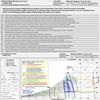


















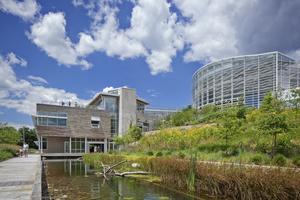
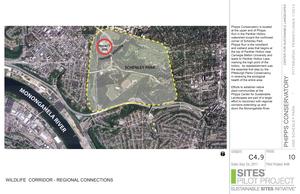
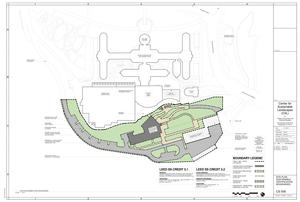
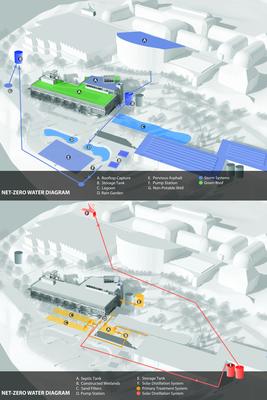
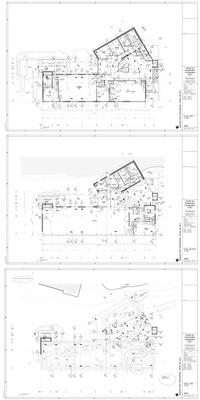
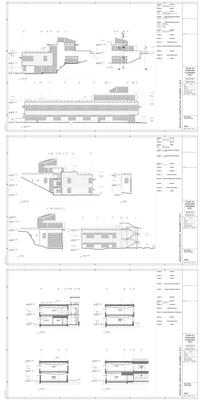
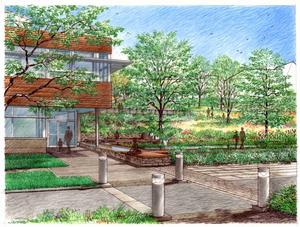
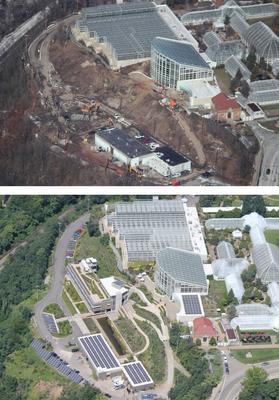
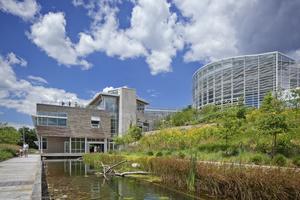
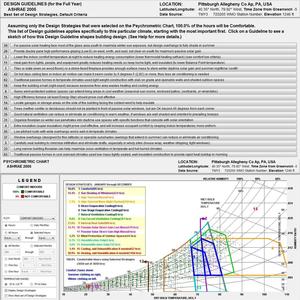
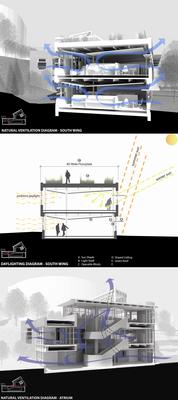
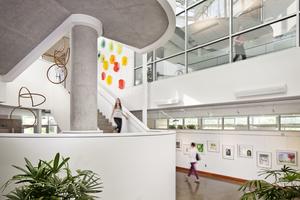
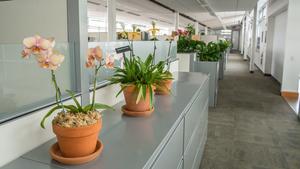
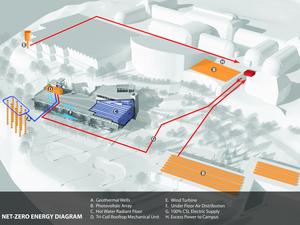
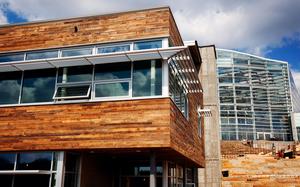
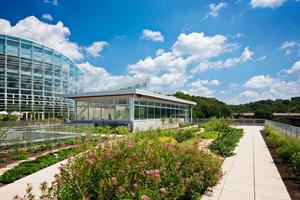
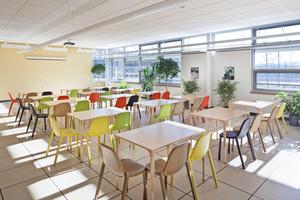
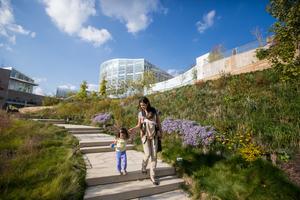
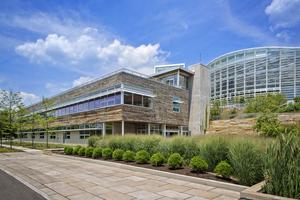


This project incorporated a number of innovative sustainable standards: piloting the sustainable SITES, the WELL building standard, and the Living Building Challenge. The project reclaimed a brownfield site and created an ecological regeneration of a blighted site, all on one of the most difficult sites on the whole campus. The building connects the inside and outside, demonstrating how to live in harmony with nature.